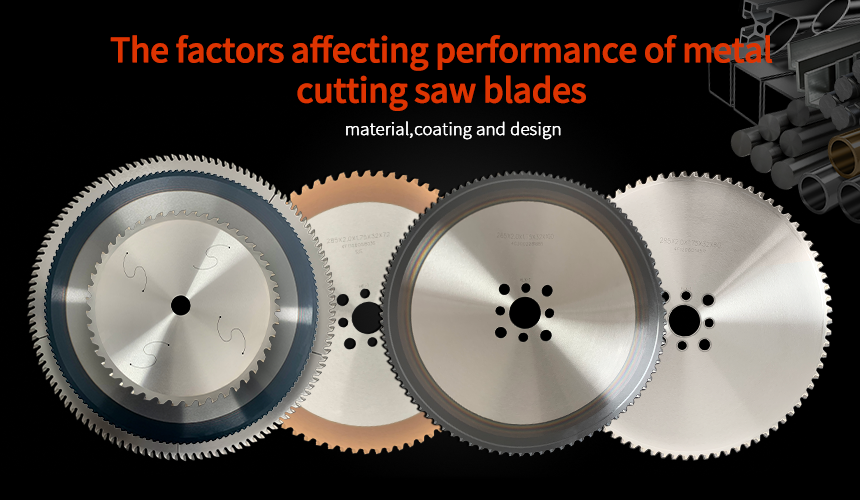- Super User
- 2024-12-27
Yam cuam tshuam rau kev ua tau zoo ntawm cov hlau txiav kaw cov hniav: cov khoom
Kev ua yeeb yam ntawm cov hlau txiav kaw yog cuam tshuam los ntawm ntau yam, cov ntsiab lus suav nrog pom cov khoom siv, ruaj khov, ntau yam ntawm cov ntawv pom hniav.Qhov cov ntsiab lus tom qab piav qhia qhov cuam tshuam ntawm peb yam ntawm kev ua yeeb yam ntawm cov hlau txiav pob zeb:
1.Shaw Cov Khoom Siv Hluav Taws Xob:
Cov khoom ntawm pom hniav yog ib qho tseem ceeb rau nws cov khoom ua tau zoo, kev sib txawv thiab coj cov hlau ceev pom cov hlau kub ceev (HSS), carbide thiab li ntawd.
Kev Kub Ceev Hlau (HSS): HSS yog ib hom khoom siv feem ntau siv rau kev txiav cov hlau, uas muaj cov khoom siv hluav taws xob zoo thiab cov khoom kub siv tau zoo Nrog carbide, kev coj tsis zoo, haum rau kev txiav qis ceev.
Carbide:Carbide pom cov hniav muaj ntau dua hardness thiab hnav tsis kam, haum rau kev txiav ntau dua, kev pabcuam lub neej ntev dua, haum rau kev txiav ceev, tab sis nws brittleness yog Loj, yooj yim rau tawg nyob rau hauv kev cuam tshuam.
Cov khoom xaiv nyob ntawm seb cov hlau los txiav thiab txiav cov kev xav tau ua ke nrog cov khoom siv tawv me me, tab sis tib lub sijhawm, nws yuav tsum tau ua ke nrog kev ua kom tsim nyog thiab tsim qauv los ua kom ruaj khov.

2.Cov txheej:
Cov txheej ntawm hlau txiav tuaj yeem txhim kho cov ris tsis kam, kub ua kom pom kev, thiab lwm yam khoom siv no tuaj yeem tiv thaiv cov hniav pom , tab sis kuj tseem txhim kho kev txiav nyiaj.
Titanium nitride (tin) txheej: Tin coating: Tin coating yog feem ntau siv rau cov hlau ceev thiab carbide pom cov hniav. Nws tuaj yeem txhim kho lub hardness thiab hnav tsis kam ntawm pom cov hniav pom kev, txo cov kev pabcuam kev sib txhuam thiab txuas ntxiv rau cov txheej txheem kev txiav thiab pab txhim kho kev txiav cov raug.
Titanium aluminium nitride (tialn) txheej: cov txheej no yogsib xwsly siv rau kev txiav cov ntawv thov nrogKev kub siab thiab siab. Nws muaj cov zog muaj zog dua thiab tuaj yeem tiv thaiv ntau dua qhov kub. Nws yog qhov haum rau qhov nyuaj txiav cov ntaub ntawv xws li hlau hlau.
Titanium carbide (TIC) Txheej: Titanium Carbide Txheej muabs Hnav zoo kev tiv taus thiabis Haum rau cov ntawv thov uas coj yuav tsum tau ua.
Lub luag haujlwm ntawm cov txheej yog txhawm rau txo qhov kev sib txhuam ntawm cov cuab yeej thiab hlau, thiab txo covqho so Thaum txiav, yog li kev txhim kho lub neej pabcuam thiab txiav zoo ntawm pom cov pob zeb.Morover, txheej tiv thaiv hlau tej daim hlau chips los ntawm pom hniav hniav tawm, ua kom cov khoom sib xyaw ua ke.
3.Pom hniav tsim:
Tus qauv pom ntawm cov hniav pom tsuas yog hais txog cov hniav txhuam, cov qauv hniav, cov qauv tsim qauv, thiab lwm yam. Cov qauv ntawm cov khoom siv tau zoo, ruaj khov thiab txiav cov hniav pom zoo Cov.
Cov duab hniav thiab suab hniav: cov hniav txhuam hniav (xws li cov hniav ncaj, bevel cov hniav, thiab lwm yam. Lub suab me me yog qhov tsim nyog rau kev txiav kom nplua, thaum lub suab loj dua rau cov hlau ceev ntawm cov hlau tuab. Tus tsim qauv ntawm cov hniav txhuam yuav tsum tau xaiv raws li lub hardness, tuab thiab txiav cov khoom yuav tsum tau ntawm cov khoom txiav.
Tsim Hniav Ncaj Nraim: Nws yog qhov tsim nyog rau kev txiav cov hlau hnyav, muab cov kev txiav kev txiav muaj zog, tab sis nws yooj yim los tsim cov kev co kom loj thaum txiav.
Bevel Tus Hniav: Nws yog qhov haum rau cov xwm txheej qhov chaw ntau dua kev txiav ceev thiab cov khoom lag luam me me yog xav tau rau kev txiav ntawm cov khoom siv thinner.
WaveTormiav cov qauv tsim: nws feem ntau yog siv los txhim kho cov nyhuv txiav thaum txo cov kev sib tw kub.
Lub thickness ntawm pom hniav: cov tuab ntawm pom cov hniav ncaj qha cuam tshuam rau qhov chaw ruaj khov yog qhov tsim nyog rau cov ntawv thov qhov twg siab precision txiav yog yuav tsum tau, tab sis durability yog neeg pluag.
Ntws Groove Tsim ntawm Pom Hniav:
Qee tus pom cov hniav yog tsim nrog tshwj xeeb nti uas muaj peev xwm tso cov pob zeb txiav, thiab yog li txhim kho kev txiav kev ua tau zoo thiab zoo.
Pom Hniav qauv qauv tsim:
Sab hauv thiab sab nraud qauv ntawm lub ntsej muag hniav, xws li cov duab ntawm qhov chaw nruab nrab thiab cov qauv kev txhawb nqa, yuav cuam tshuam qhov sib npaug thiab rigidity thaum lub sij hawm txiav. High-zoo pom cov hniav hluav taws xob feem ntau yog tsim kev faib tawm tsim nyog thiab txhawb cov qauv qauv kom ntseeg tau tias lawv nyob ruaj khov thaum lub sijhawm txiav ua kom deformation.
Xaus:
Cov ntsiab lus tseem ceeb cuam tshuam rau kev ua yeeb yam ntawm cov hlau yog cov khoom siv, txheej txheem thiab ntau ntawm cov ntawv thov, txheej txhim khoCov hnav tsis kam, kub tsis kam thiab corrosion tsis kam ntawm cov saw ploojCov. Tus qauv tsim muaj qhov cuam tshuam ntawm kev txiav cov nyhuv thiab kev ua tau zoo, qhov tsim nyog pom cov khoom siv tau los txhim kho kev ua haujlwm tau zoo thiab txiav cov kev pabcuam lub neej ntawm lub cuab tam.














